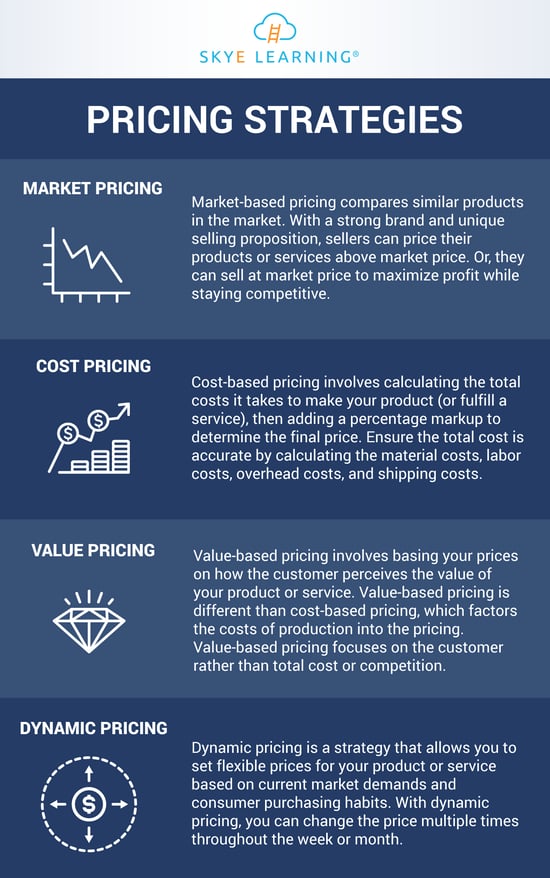Developing a pricing strategy can be a complex process that requires a balance between competitive pricing and turning a profit. And, there's a good chance your pricing strategy will change over time.
For niche markets, prices are typically higher than larger markets due to the lack of competition and the specialization of the product or service. Generally, consumers are willing to pay more for handmade, one-of-a-kind items or specialized services. However, the drawback is that the per-unit costs of production are generally higher since everything is produced on a much smaller scale.
The following infographic outlines four main pricing strategies: market, cost, value, and dynamic pricing.







